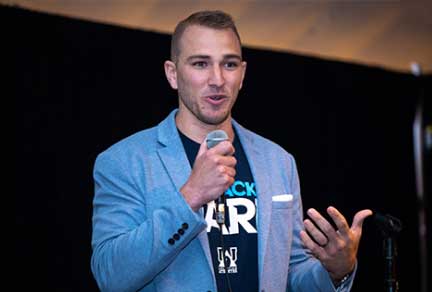Evidence planning for biotechs: Closing gaps to maximize value
Whether you’re developing a product with intent to bring it to market or to offer it for acquisition, you’ll need to convince a wide range of stakeholders of the value of the therapy. In clinical development, clearing hurdles with regulators and payers is essential, but it’s also critical that you earn the confidence of patients, prescribers – and potential investors.
Stakeholders often have differing perspectives and competing preferences for evidence, all of which must be addressed in a timely and cost-effective way. To do otherwise introduces unnecessary risk into an already complex development process.
The key to delivering a compelling evidence package to multiple stakeholders: the integrated evidence generation plan (IEGP). In creating an IEGP, your team works towards consensus on must-have evidence and the most advantageous ways to generate it. A thorough IEGP will allow you to defend your strategy decisions to investors, differentiate your product in a crowded market, and deliver a robust evidence package that goes beyond clinical data.
Creating and following an IEGP is also the best way to avoid common evidence gaps — deficits that can cost you time, capital, and credibility. It also allows for avoidance of duplicity in evidence generation activities and more efficient consolidation of evidence needs (e.g. taking multiple local affiliate evidence needs and consolidating into a centralized evidence program).
During our recent webinar, we explored these challenges using oncology-specific scenarios, though the insights can be applicable across other therapeutic areas and product classes.
Based on our experience, five of the most common gaps include:
- Lack of patient diversity: For the FDA, this often means that studies include too few patients and/or sites in the U.S., which makes it difficult to extrapolate results to demonstrate how therapies might perform in U.S. clinical settings.
- Lack of appropriate dose optimization: The FDA says that pre-approval dose-selection studies can be conducted with just 20-40 patients per group. If doses are not optimized prior to approval, however, the FDA may require a post-approval non-inferiority study that could potentially involve hundreds of patients, making it much more costly to conduct.
- Insufficient biomarker strategy: Regulators want to identify the patient population(s) that will derive the largest benefit from a therapy. This is difficult to determine without an appropriate biomarker strategy.
- Reactive planning for single-arm studies: We see this most often in single-arm, last-line oncology studies on a path to accelerated approval in the U.S. and EU. In such cases, developers often need to conduct real-world evidence (RWE) studies – but if sponsors design these studies after clinical data has been read out, regulators are likely to assume the designs include bias due to criteria selectiveness.
- Failure to distinguish between the needs of regulators and payers: Too often, development teams assume that a marketing authorization will pave the way for acceptance among all other stakeholders. But while regulators are primarily concerned with a product’s quality, safety and efficacy and whether the benefit-risk balance is positive, health technology assessment (HTA) bodies and payers must also be convinced of a therapy’s comparative clinical benefit and cost-effectiveness at the proposed price.
If you understand these potential pitfalls early in development, you can create an IEGP that allows you to sidestep these and other evidence gaps. The strategy you develop could include:
- Early engagement with stakeholders: To build an IEGP that addresses the needs of all stakeholders, you need to first understand those needs. If you know, for example, that regulators will want your study population to include a certain percentage of U.S. patients or that payers will measure your product against a specific comparator, this will help you design your pivotal studies accordingly.
- A holistic approach to differing requirements: While all stakeholders will demand safety and efficacy data, payers will also require evidence of your product’s economic value. Increasingly, developers are entering value-based contracts (VBCs) in which reimbursement varies depending on product performance. Developers should identify early the most appropriate data sources – registries, secondary databases, or a combination of both – to determine likely long-term durability of response. This is particularly important for cell and gene therapies, which can be costly and are often unproven in real-world settings. With this evidence, you can be well prepared for payer negotiations, knowing what performance metrics you are willing to reasonably commit to and how difficult or how easy it might be to satisfy evidence needs for future negotiations.
- Adaptive and seamless designs: Designing a study that includes mid-trial modifications gives sponsors greater flexibility and improves chances for success. Adaptive and seamless designs are particularly helpful for early drug development (dose escalation, dose optimization and dose expansion) as they allow researchers to capture efficacy and safety data across a range of doses, expanding cohorts as needed to find the optimal dose. At Parexel, we often recommend a formal expansion design for each dose cohort, such as the Bayesian Optimal Phase 2 (BOP2) design or Simon’s two-stage design with stopping rules to potentially select the optimal dose at an interim analysis.
- Biomarker testing: Creating a comprehensive approach to companion diagnostic (CDx) testing will allow you to identify patients most likely to benefit from your therapy. Patient stratification will likely improve your return on investment, particularly for precision drugs, as the CDx will help demonstrate both safety and efficacy and potential health-economic value.
- Parallel RWE studies: If you expect to conduct RWE studies – a necessity for any program that includes single-arm studies – design RWE and clinical trials simultaneously to prevent clinical results from biasing the generation of RWE.
Of course, no developer has enough time or funding to generate every data point that could benefit its product in advance of launch. This is especially true for biotech companies, which often operate on strict budgets and must balance phase transition vs evidence needs and resource constraints.
To generate the evidence that will result in the greatest payoff, you’ll need to consider both the product under development and the way you intend to monetize it. For example, if you plan to sell your asset prior to commercialization, you may want to focus on evidence that will support a robust target product profile, allowing you to pursue the most promising indication(s). By contrast, if you’re developing an oncology therapy with a fast-track or orphan designation – a product that will almost certainly require substantial post-market data – your evidence plan should establish a foundation for real-world studies to address these future needs.
Evidence generation always requires tradeoffs. An IEGP is a framework for making those decisions in a more proactive and strategic way. What is the impact of pursuing a particular type of evidence? How feasible is that evidence to generate? What are the risks and how might they be mitigated? Through creating an IEGP, your team decides, iteratively and with consensus, how to use your time, budget and resources to present a compelling value story. It’s the narrative that will prove the value of your product, and that will earn the funding that makes product development possible.
While implementing an integrated approach is a significant shift, it’s not a step you have to take alone. Connect with the team at Parexel to learn how we can support you in developing, executing, and validating IEGPs.
Related Insights
Blog
Incorporating the patient voice in clinical research: Validation of COAs for a rare disease NDA
Nov 17, 2025
Article
Guide for Real-World Evidence
May 21, 2021
Webinar
Assessing appropriate use of ECAs in clinical trials
May 28, 2023
Webinar
Adaptive strategies for more efficient, data-rich and patient-friendly trials
May 28, 2023
Blog
Investor-ready evidence planning: Why a robust strategy matters to funders
Dec 8, 2025
Article
How biotechs can strengthen their value story with advanced analytics
Feb 15, 2022
Blog
Studying rare cancer patient populations using integrated genomic and real-world data
Aug 30, 2023
Blog
A hybrid model supports globally diverse site participation for a retrospective cancer study
Jul 24, 2023
Video
The science and practice of ethnobridging
May 17, 2023
Playbook
Insights from the 2022 R&D Innovation Survey
Feb 17, 2023
Playbook
Are you using real-world evidence?
Feb 1, 2023
Article
8 things you need to know about eCTDs in China
Jul 1, 2022
Related Insights
Blog
Incorporating the patient voice in clinical research: Validation of COAs for a rare disease NDA
Nov 17, 2025
Article
Guide for Real-World Evidence
May 21, 2021
Webinar
Assessing appropriate use of ECAs in clinical trials
May 28, 2023
Webinar
Adaptive strategies for more efficient, data-rich and patient-friendly trials
May 28, 2023
Blog
Investor-ready evidence planning: Why a robust strategy matters to funders
Dec 8, 2025
Article
How biotechs can strengthen their value story with advanced analytics
Feb 15, 2022
Blog
Studying rare cancer patient populations using integrated genomic and real-world data
Aug 30, 2023
Blog
A hybrid model supports globally diverse site participation for a retrospective cancer study
Jul 24, 2023
Video
The science and practice of ethnobridging
May 17, 2023
Playbook
Insights from the 2022 R&D Innovation Survey
Feb 17, 2023
Playbook
Are you using real-world evidence?
Feb 1, 2023
Article
8 things you need to know about eCTDs in China
Jul 1, 2022



